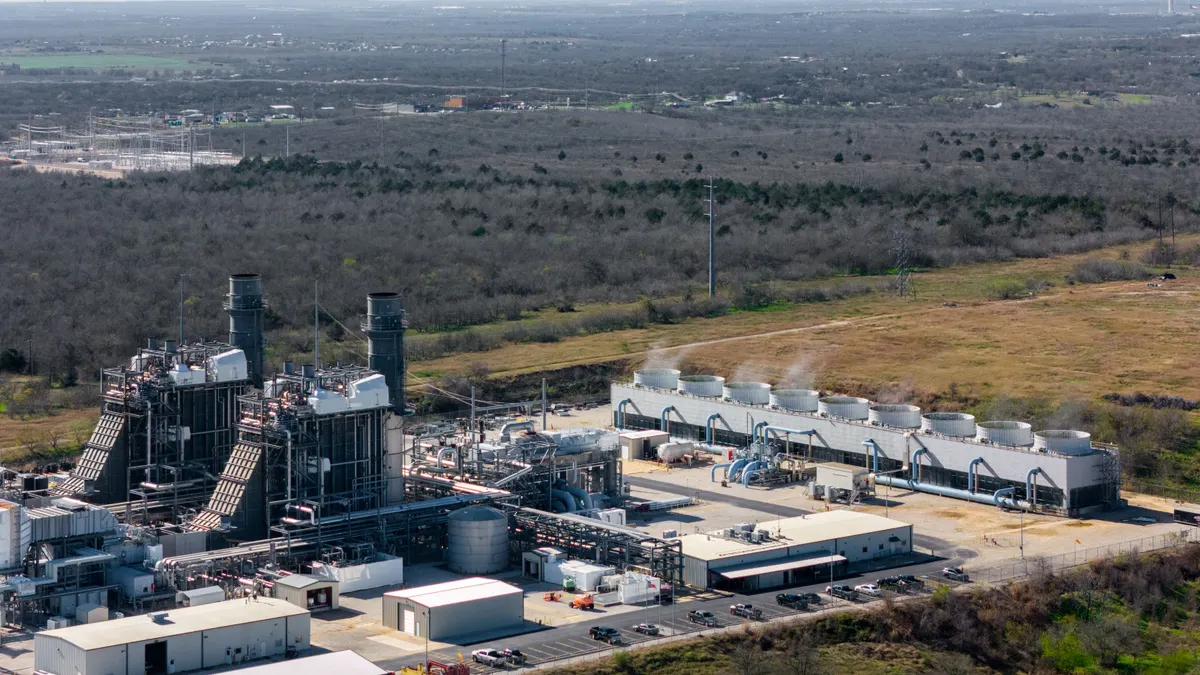Dive Brief:
- The Southwest Power Pool board of directors has approved a policy guiding the integration and interconnection of high impact large loads, or HILLs, such as data centers and manufacturing facilities, the grid operator announced Tuesday.
- SPP plans to establish a 90-day study-and-approval process for interconnecting large loads, and said its HILLs process “enables early detection of system constraints, improves coordination across entities and prepares operators for real-time impacts.”
- Peak load in SPP is expected to increase from 56 GW to 105 GW in the next 10 years, according to minutes from the board’s Sept. 4 meeting, where the HILLs policy was adopted. The new policy and associated tariff revisions will require approval from the Federal Energy Regulatory Commission.
Dive Insight:
With U.S. electricity demand poised to grow significantly after decades of stagnation, grid operators are seeking ways to speed the interconnection of new resources and loads.
PJM Interconnection has launched a fast-track stakeholder process to develop rules for interconnecting data centers, and aims to file a proposal with FERC by the end of the year. The Electric Reliability Council of Texas is working to implement new rules regarding data center interconnection that would require loads of 75 MW or more to participate in demand response programs.
“We’re striving to stay ahead of the game,” SPP Vice President for Engineering Casey Cathey said in a statement. “Large loads want answers now. They are motivated to invest and are looking for opportunities to connect to the grid now.”
The HILLs process will apply to interconnecting large loads that will be paired with new generation that is “either on-site or nearby,” SPP said, or for interconnecting large loads with current or planned generation. Load interconnections will be accelerated through integrated design, study, registration and operations.
“For developers, market efficiency and transparency are key benefits,” the grid operator said. The new approach supports “faster market entry, enhances price signals and allows these loads and supporting generation to have more confidence in expected costs and timelines.”
The HILLs policy was approved by the SPP board as Revision Request 696.
“This framework will maintain grid reliability and operational efficiency while balancing cost-effectiveness with expedited market deployment timelines,” according to the submission form.
According to RR 696, a load may be considered a High Impact Large Load if the point of interconnection is less than or equal to 69 kV and the HILL peak demand is greater than or equal to 10 MW, or if the interconnection point is greater than 69 kV and the HILL peak demand is greater than or equal to 50 MW.
As various grid operators study new large loads and the availability of grid resources to serve them, data center developers may find opportunity in building out smaller operations, Digital Power Optimization CEO Andrew Webber said in an email. The company, founded by Webber, builds and manages data centers.
“Most data center projects you hear about in the news today are hundreds of megawatts or even gigawatts in scale. I think we can comfortably consider those to be large loads,” Webber said. But smaller projects “can slip below those thresholds and perhaps create a smoother, less costly interconnection process.”
If a data center developer approaches a utility asking for 500 MW of firm power, it could cost $100 million in system upgrades and take five years or more, Webber said.
“If you ask that same entity for 35 MW or 58 MW (or whatever amount they have readily available) it can be much faster and without such significant system upgrade costs,” he said. “We think this is a massive overlooked opportunity.”















